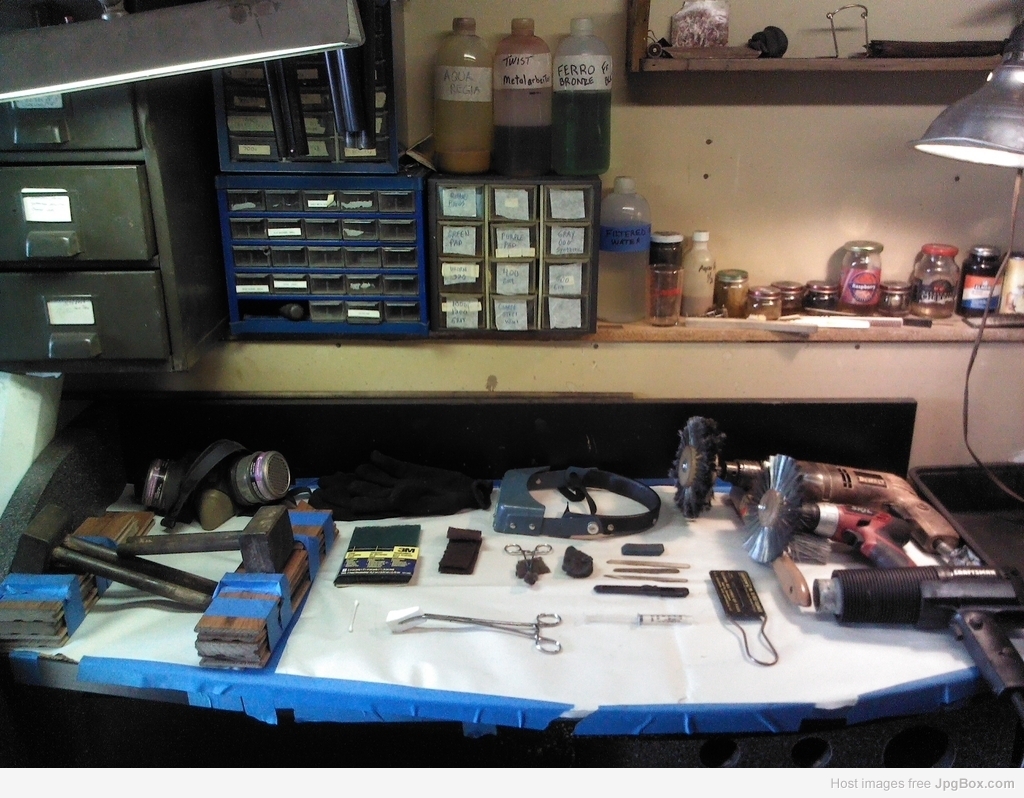Here's my "Carding Bench" set-up. It's pretty basic, yet contains what I consider the minimum as far as tools and equipment. Even though they say that a picture is worth a thousand words, I'll provide an explanation for some of the items. So, instead of a "thousand words" perhaps people can learn a "thousand things" and avoid some of the mistakes that I initially made.

Everything above the bench is self-explanatory. Solutions, both full and diluted strength, as well as the drawers holding the various abrasives seen on the bench.
Left top, respirator and gloves. Optivisor at the top middle. Far left are my barrel holders, dowels in blocks that then fit into the notches of the flat holders. It divides the work into four parts. Far right are the carding wheels, a four-row on the corded drill, a one row on the small cordless one. I prefer to use the one row on ribs and tight areas, it's easier to see the tips hitting the metal, and it eliminated the temptation to "bear down" with the four-row wheel.
Specific abrasives in the middle. Used after the power carding. Green pad is only used in initial barrel prep, it's too coarse for further use. Next to it is a fine Scotchbrite (purple) pad. It has only very limited use, using only small pieces of it on specific small spots. It's best use is the final burnishing pad right before the first rust. Next to that is 000 synthetic (grey) steel wool. I use small pieces of it in the forceps to work on small areas, usually on pattern-welded barrels.
Lastly, we have 0000 degreased steel wool. This is what I use in conjunction with the shaped craft sticks for the small areas. Especially along the top rib. Strokes are very short, so as not to leave streaks.
The bottom of the bench shows what I use for application. A pair of forceps I clamp a sponge into. The sponge is squeezed well, for an even application. I use a Q-tip for the top rib joint, so there's not an excess of solution in the joint. Immediately after application, I use the heat gun to dry the barrels in order that there are no runs or streaks. The syringe is there to remind people to have one if flushing the ribs is necessary. An air compressor is the preferred method. The barrels are then put on a hanger and hung in the rusting cabinet. Lastly, I then use the file card to lightly dress the sides of the four-row wheel back to straight, so I'm ready for the next barrel.
This is pretty much what you need, but you could certainly hand card if only doing a few barrels.
Regards
Ken